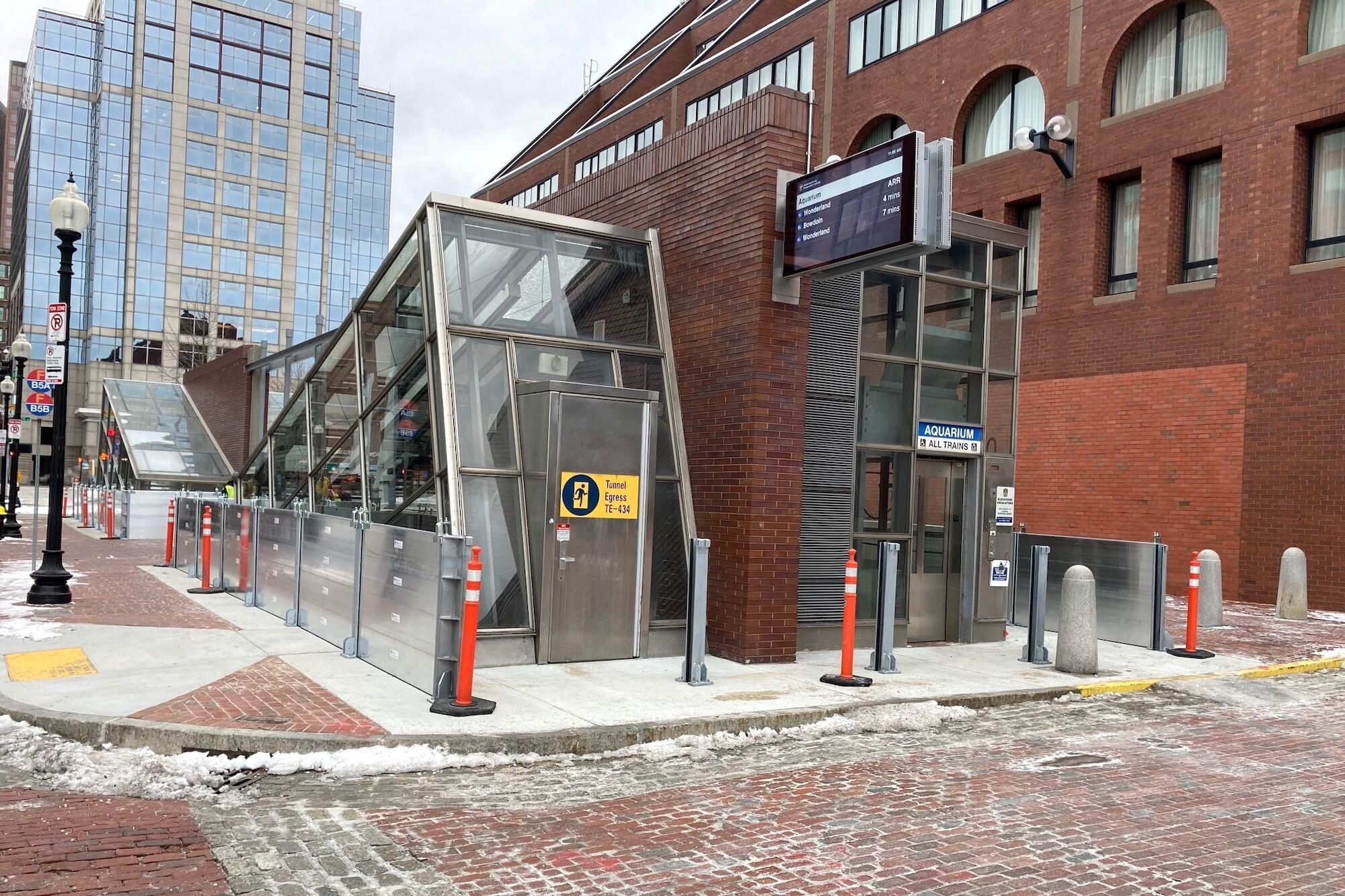Climate Change Resiliency

While we work to reduce our GHG emissions, climate change will continue to impact public transit in Greater Boston.
Extreme weather events—heavy rain, storm surge, and sea level rise—can delay or disrupt service, threaten the health and safety of our customers and employees, and raise the cost of repair, maintenance, and operations. These events are expected to increase in both frequency and intensity in the next 50 years.
Building a Better T
As part of our $9.6 billion, 5-year capital investment plan, we're renovating stations, modernizing fare collection systems, upgrading services for our buses, subways, and ferries, and improving the accessibility of the entire system.
Our Plan to Address Climate Change
We are committed to mitigating the risks of climate change and investing in a more sustainable transit system.
Vulnerability Assessments
Vulnerability assessments aim to understand which parts of the system are at highest risk for damage due to climate change. These assessments inform our transit asset management program, our five-year Capital Investment Plan (CIP), and our system-wide modernization projects.
System-Wide Vulnerability Report (Complete): A systematic look at the entire MBTA's vulnerability to climate change stressors
Blue Line (Complete): A summary report of the Blue Line's vulnerability to climate change—we have also completed detailed flood risk assessments of key areas such as Orient Heights and Aquarium Station
Orange Line (Complete): An assessment of the Orange Line's vulnerability to climate change, including all yards and maintenance facilities
Red Line/Mattapan (Complete): An assessment of the Red Line's vulnerability to climate change, including all yards and maintenance facilities
View the Red Line Climate Change Assessment StoryMap
Green Line (Complete): An assessment of the vulnerability of yards, maintenance facilities and Green Line branches, excluding the Green Line Extension (GLX)
View the Green Line Climate Change Assessment StoryMap
Power, Signals, and Communications (Complete): An assessment of all power, signal, and communication systems in the rapid transit system
Pump Systems (Complete): An assessment of the MBTA's pumping systems within the tunnels, focusing on capacity, conditions, and ability to handle increased flooding
Commuter Rail Facilities (Complete): A GIS-based flood risk assessment of existing Commuter Rail maintenance facilities, dispatching and layover locations, and parking lots
Assessment and Design Standards
We’ve developed a set of standards to assess climate change impacts and ensure that resilience is built into each project from the earliest stages of design.
- The inclusion of Vulnerability Assessment Scores in the Capital Needs Assessment, which is conducted every three to four years, to evaluate the condition and age of our capital assets, and the approximate costs to replace or repair them. These scores will help us prioritize projects with resiliency benefits, to address vulnerability even earlier in project planning stages.
- A climate resiliency score helps evaluate the climate focus of projects being proposed for the five-year Capital Investment Plan (CIP)
- New design standards, developed with the Office of the Chief Engineer, help set standards for flood protection, stormwater management, and other forces that can affect the infrastructure
- Mandatory consideration of climate-related risks is part of the design and construction of new projects—all new designs will apply new engineering practices according to Leadership and Environmental Energy Design (LEED) standards and the Institute for Sustainable Infrastructure's Envision standards
Resiliency Projects
While many of our capital projects include some form of climate resiliency, some of our work is primarily focused on mitigating the impact of natural disasters, particularly flooding and rising sea levels.
- Fenway Portal Flood Protection Project (Complete): Included the construction of flood doors at the Fenway Portal on the Green Line D Branch
- Aquarium Station Flood Proofing Project (Complete): Included the installation of a new flood door at Long Wharf and flood barriers at Aquarium station
- Charlestown Sea Wall (Complete): Reconstructed the sea wall near the Charlestown Garage to protect the facility from waterfront erosion and future sea level rise
View the May 2022 board presentation on the MBTA climate change overview
Sustainability Report

To learn more about our efforts to build a more sustainable future, read the 2017 Sustainability Report.
Building a Better T
As part of our $9.6 billion, 5-year capital investment plan, we're renovating stations, modernizing fare collection systems, upgrading services for our buses, subways, and ferries, and improving the accessibility of the entire system.
Sustainability Report

To learn more about our efforts to build a more sustainable future, read the 2017 Sustainability Report.